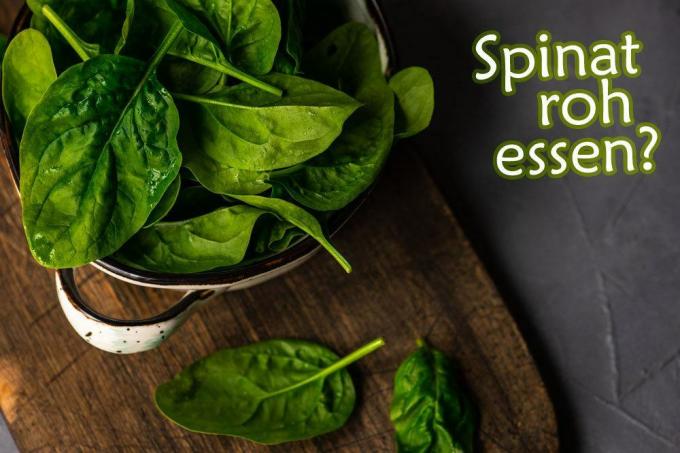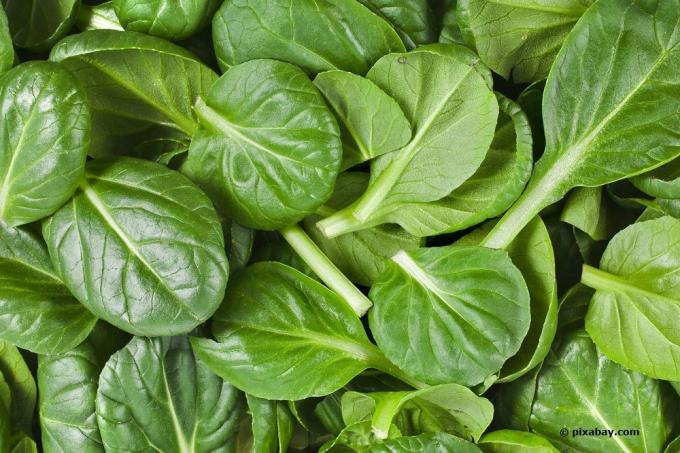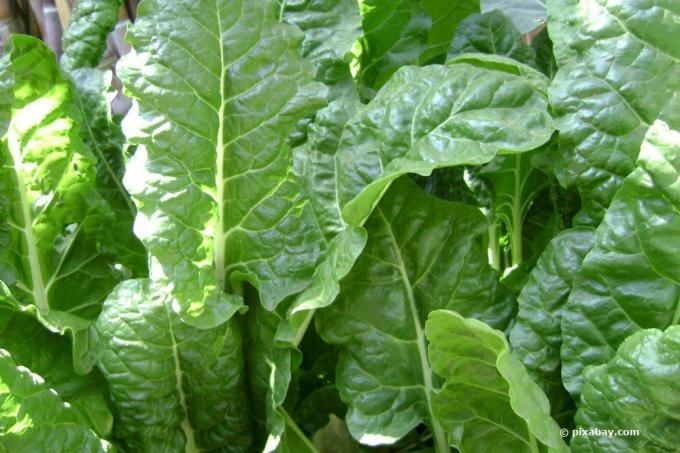
table of contents
- Eat spinach raw?
- Oxalic acid
- Nitrate - does it make spinach leaves carcinogenic?
- Eating spinach raw - a consumption recommendation
Spinach is the absolute culinary object of hatred for all children - goes the cliché. Whether this is actually the case, however, is doubtful given the multitude of possible preparation methods. Cooked, gratinated, blanched or raw - the variety of dishes knows hardly any limits. But stop! One reads again and again that you are not allowed to eat leaf spinach raw. But why? Or is it not true after all? We clarify!
Eat spinach raw?
Include numerous plants from the vegetable garden Oxalic acid. Most famous because of the high content of rhubarb be. But the acidity can also be determined in spinach. Initially, this is not a real toxin. However, oxalic acid binds calcium during digestion. Since calcium is essential for many processes in the human body, excessive consumption of oxalic acid in conjunction with a relatively low-calcium diet can lead to calcium deficiency. In addition to deficiency symptoms, kidney stones can be the result, which can form in particular as a result of an imbalance between oxalic acid and calcium. The classic remedy for oxalic acid in food is to warm it up. It decomposes at around 60 degrees and is harmless to humans.
Oxalic acid
But before you get used to the idea of a life without raw spinach, let's take a closer look at the oxalic acid content of this plant:
- Average oxalic acid content per 100 grams fresh weight: approx. 970 milligrams
- Comparison: rhubarb approx. 805 milligrams, tea approx. 1,150 milligrams, amaranth approx. 1,580 milligrams, potatoes approx. 80 milligrams, beetroot approx. 72 milligrams
- Higher acidity in older, fully ripe leaves
- Distinguishing signs of full maturity: leaf size, elongated leaf shape, mostly wavy
The question now arises whether this oxalic acid content actually results in a problem when eating raw. This question can be answered quite easily:
For healthy people, eating it raw is certainly safe no problem. People who are already suffering from health problems should prefer to use a cooked preparation variant to be on the safe side. However, if you keep in mind that the large, old leaves are to be viewed particularly critically, the “problem” with oxalic acid is put into perspective. Because the particularly tender and fine baby spinach is usually offered and recommended for eating raw. This is harvested young and immature from a biological point of view, so that the oxalic acid content is hardly significant here. The fully grown spinach is often used with creamed spinach and other dishes to be cooked due to its tougher leaves.
Nitrate - does it make spinach leaves carcinogenic?
The second big bogeyman when it comes to eating raw spinach leaves is nitrate. One reads again and again about the danger posed by nitrate:
- Can be converted to nitrite or nitrosamines in the body
- Poor oxygen transport in the blood of toddlers and babies due to nitrite
- Carcinogenic effects of nitrosamines, i.e. carcinogenic
The focus is on spinach leaves because they generally have a very high nitrate content. However, the following also applies here:
- Nitrate accumulation in the plants with increasing growth and age
- Enrichment mainly in stems and pronounced leaf veins
- Exposure particularly high in leaves with signs of aging such as spots or yellow discoloration
Attention: In addition to the age of the plants, fertilization is also involved in the nitrate content! The more artificial fertilizers containing nitrates are used, the more it is stored in the plants. Recourse to organically produced products eliminates this factor, so that conclusions can then be drawn about nitrate pollution based on age.
From this one can, like oxalic acid, deduce the following for the consumption of spinach: Since the Nitrate content increases with age, especially adult leaf spinach is considered critical too regard. Baby spinach against it can without hesitation can be consumed raw.

tip: If your spinach has grown up and you still want to eat it raw, remove the stems and thick leaf veins. In this way, the largest reservoirs for the nitrate disappear and the burden on your organism is significantly reduced.
Eating spinach raw - a consumption recommendation
Now that you know about the biggest problem areas in uncooked spinach leaves, you can easily make some kind of consumption recommendation with this knowledge:
- The younger the spinach leaves are harvested, the safer they are when it comes to the choice of preparation.
- The older the spinach, the less it is used in large quantities raw consumption suitable.
- If small children and sick or debilitated people are affected, raw consumption should only be done in moderation and preferably with young spinach leaves.
- Adults and healthy people can easily eat raw spinach dishes. Only excessive consumption can lead to problems in the long term or promote other clinical pictures.
tip: Use the interactions of different substances in your meal planning. Adding acid, such as lemon or orange juice, significantly reduces the likelihood of nitrate being converted into nitrosamines.




